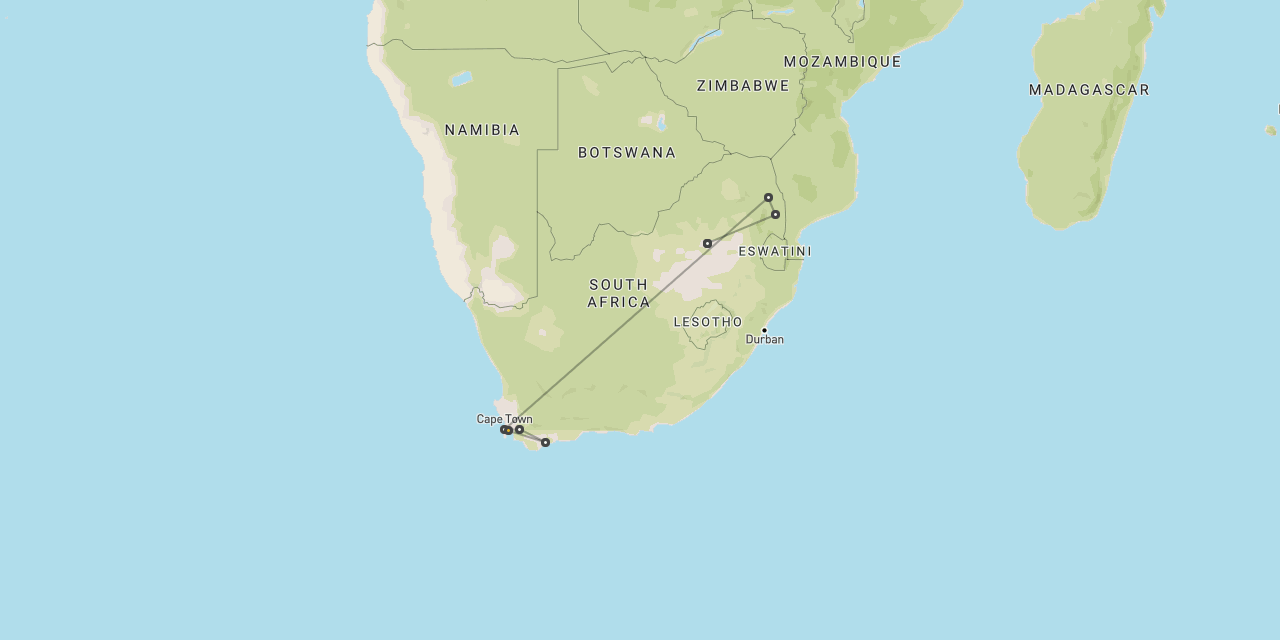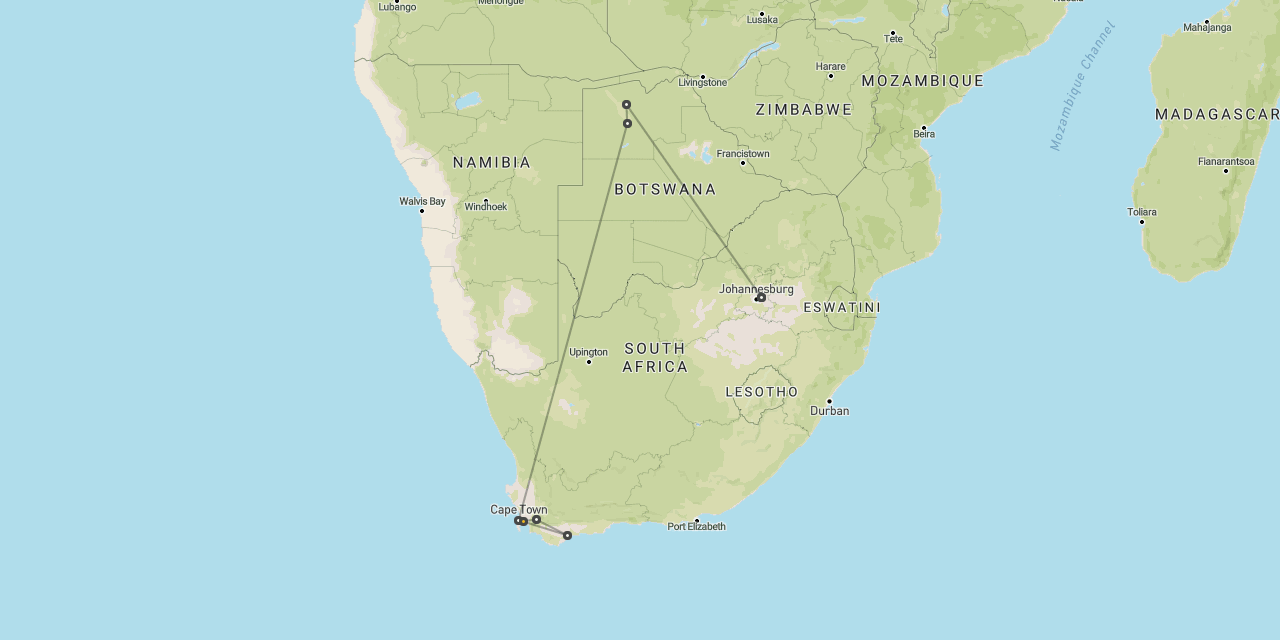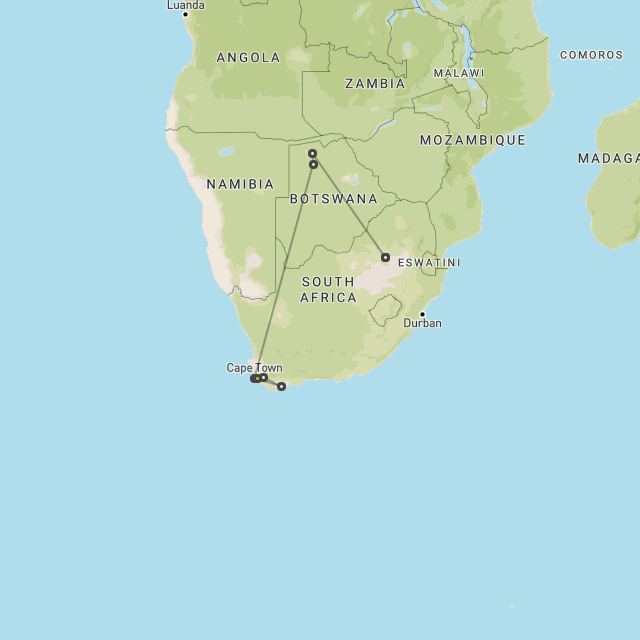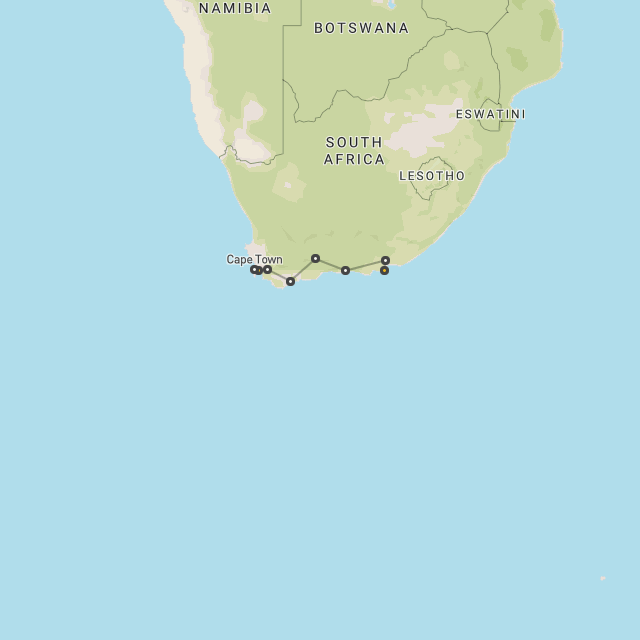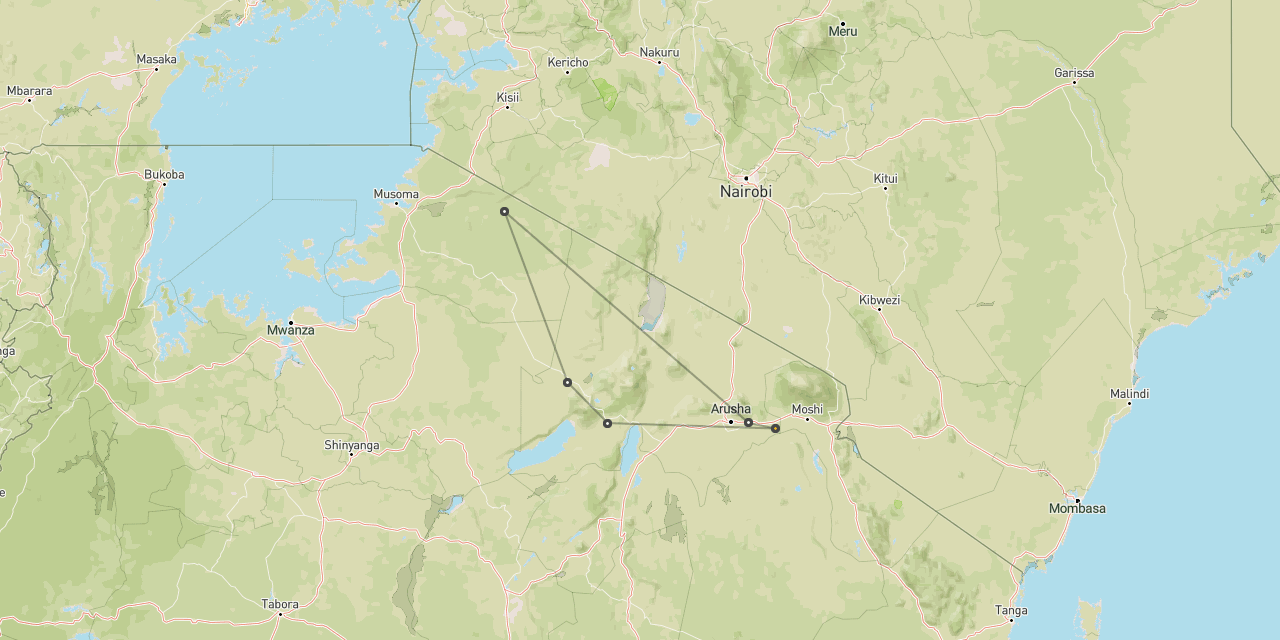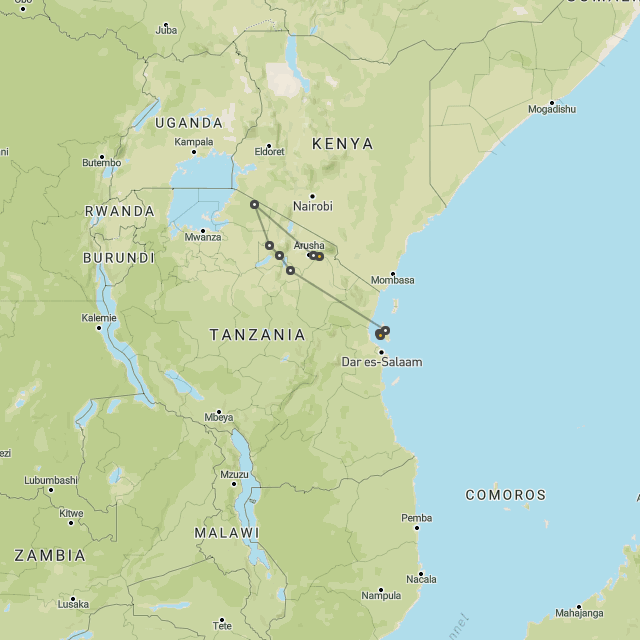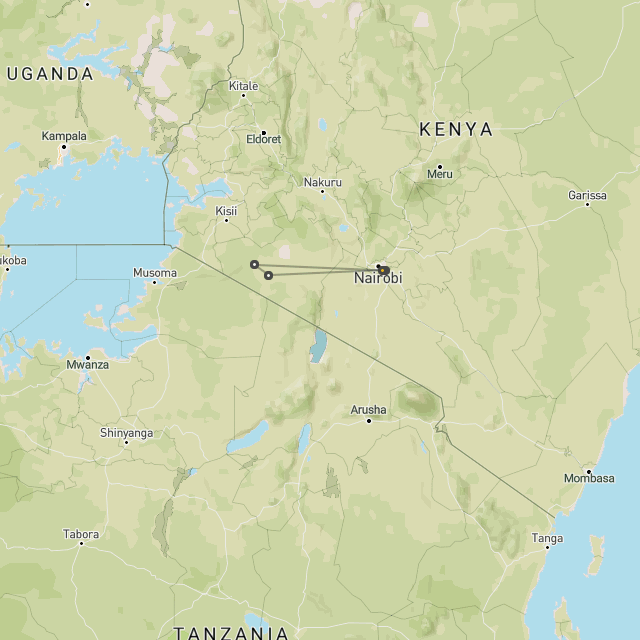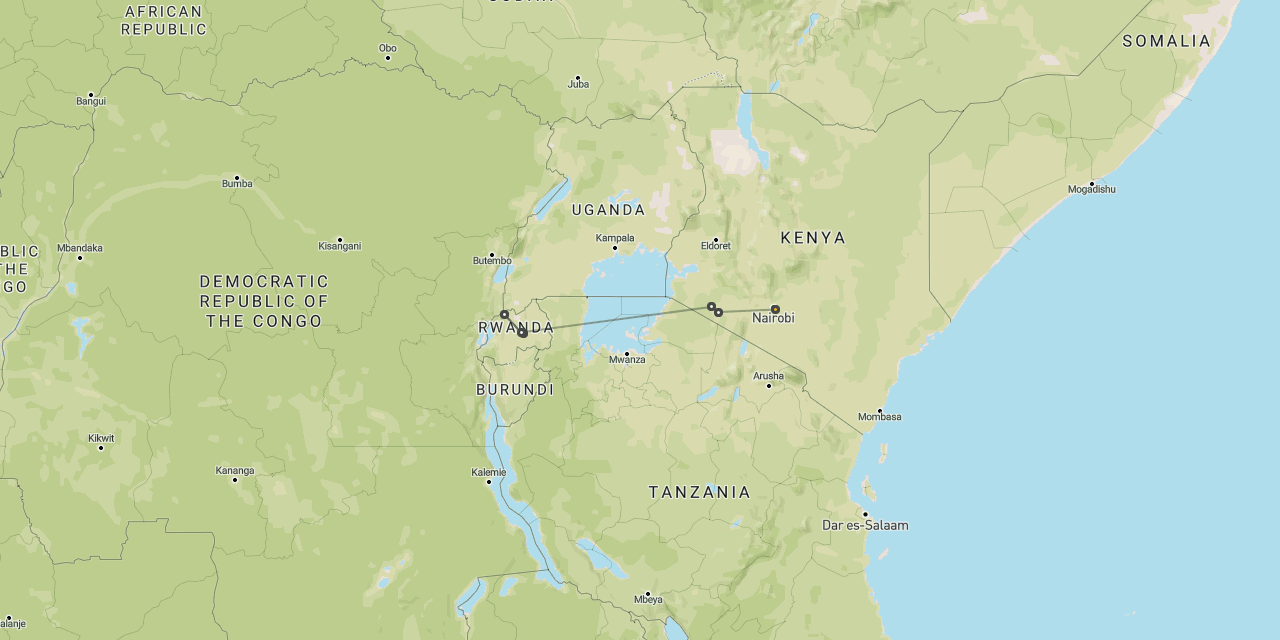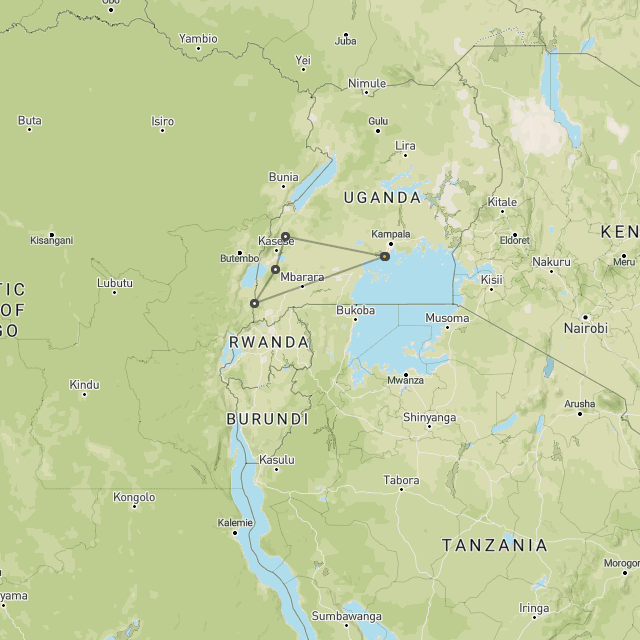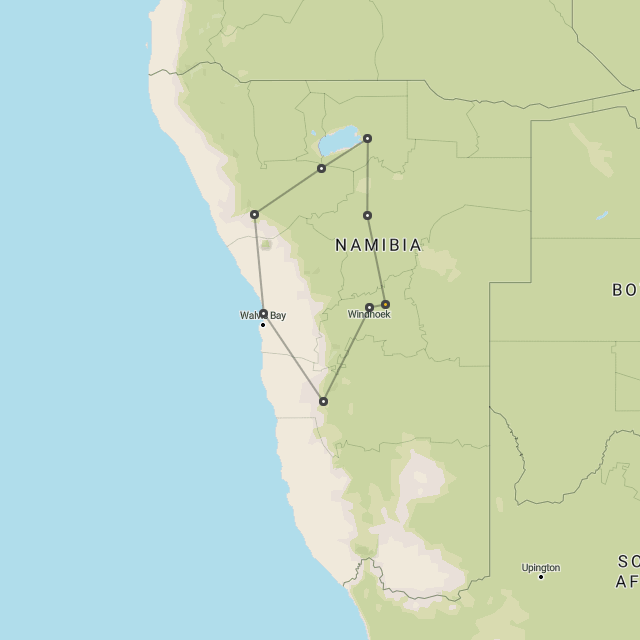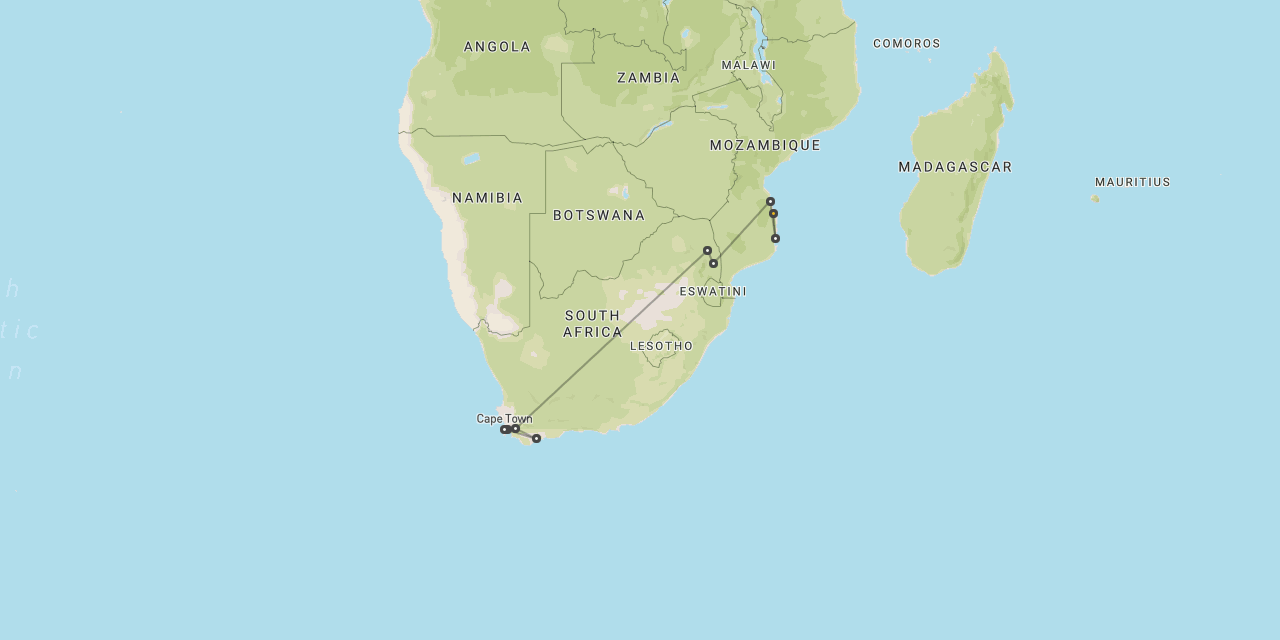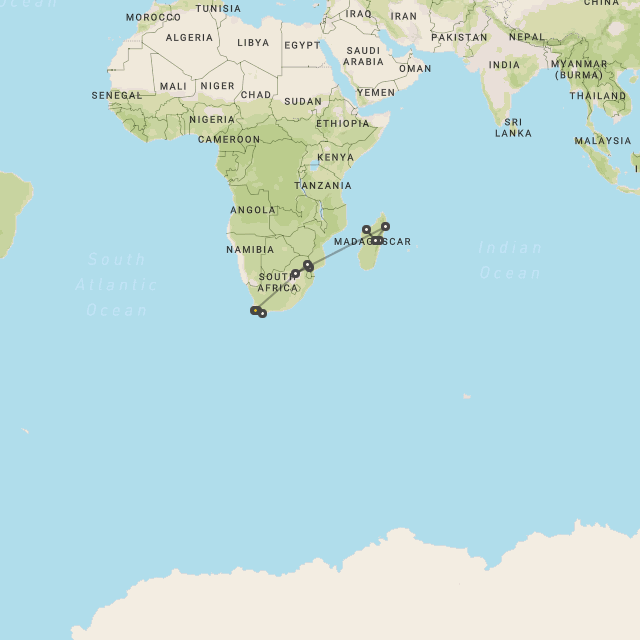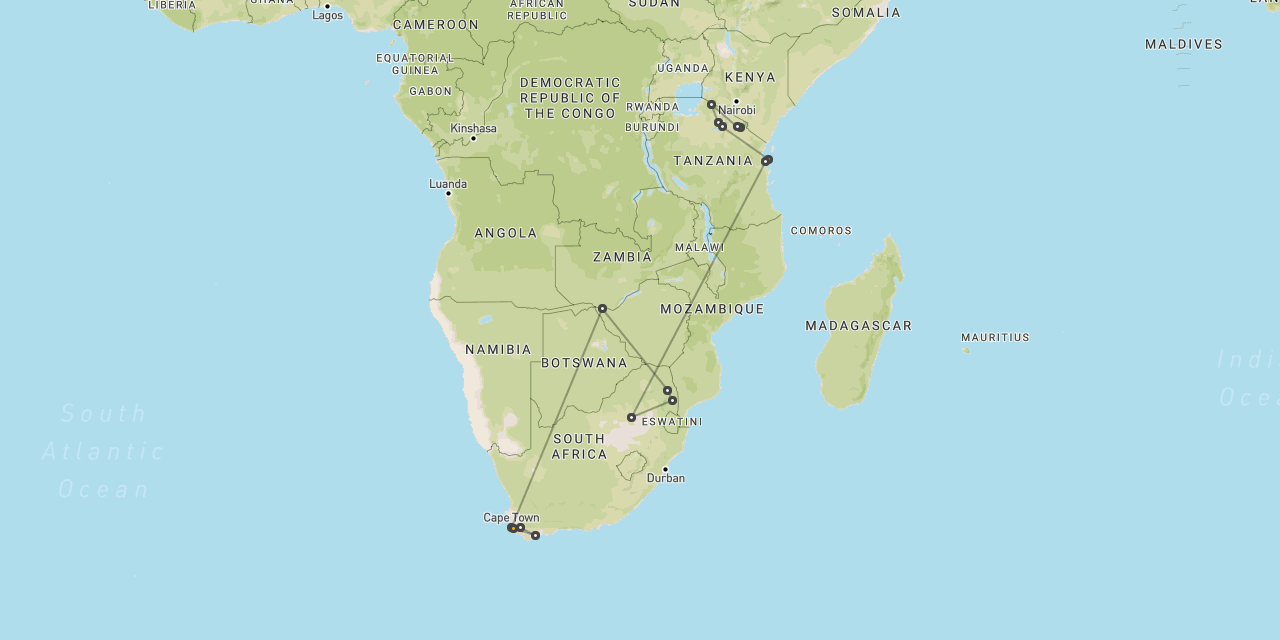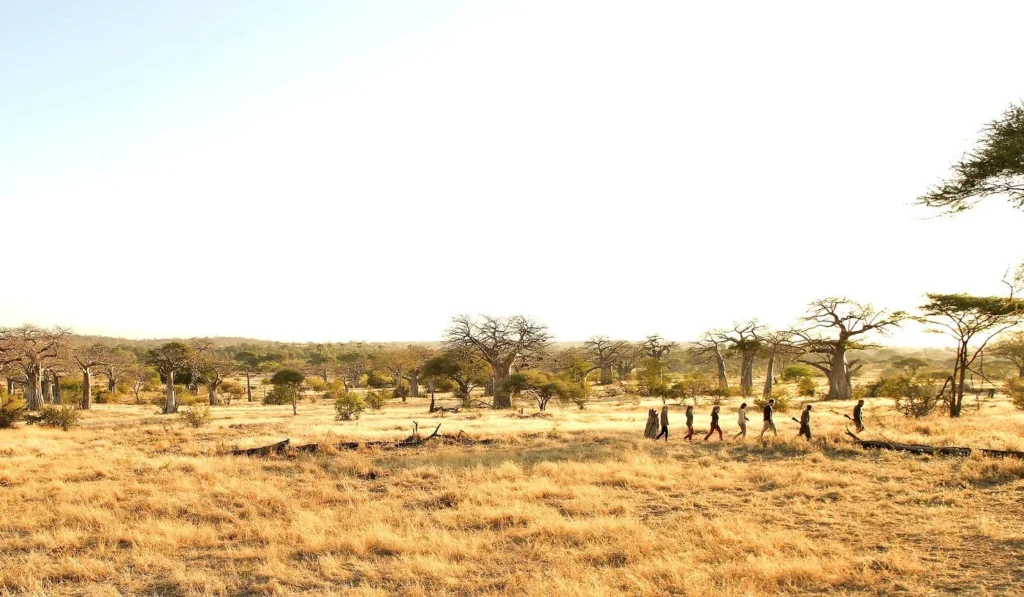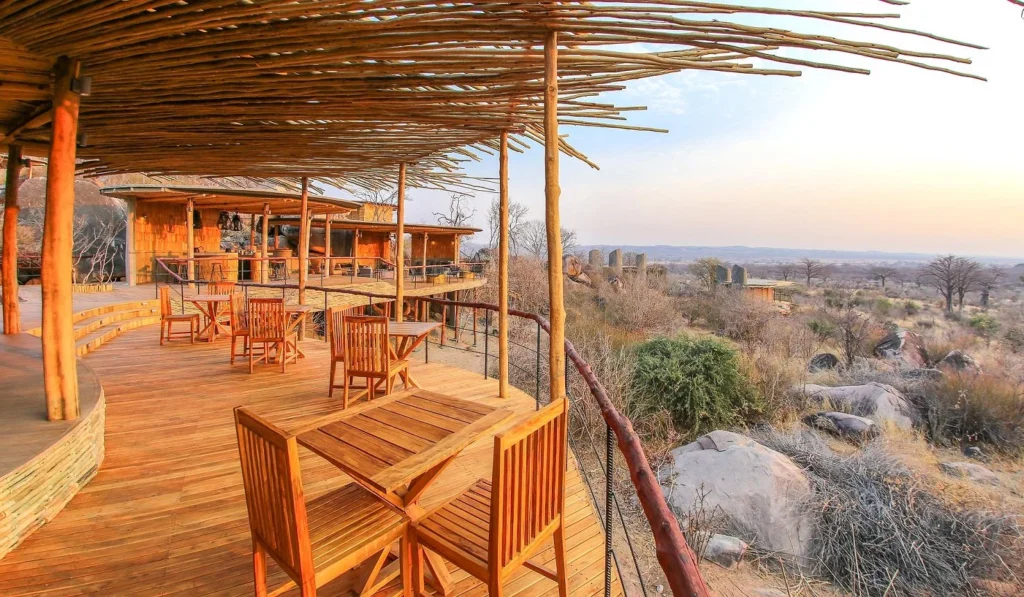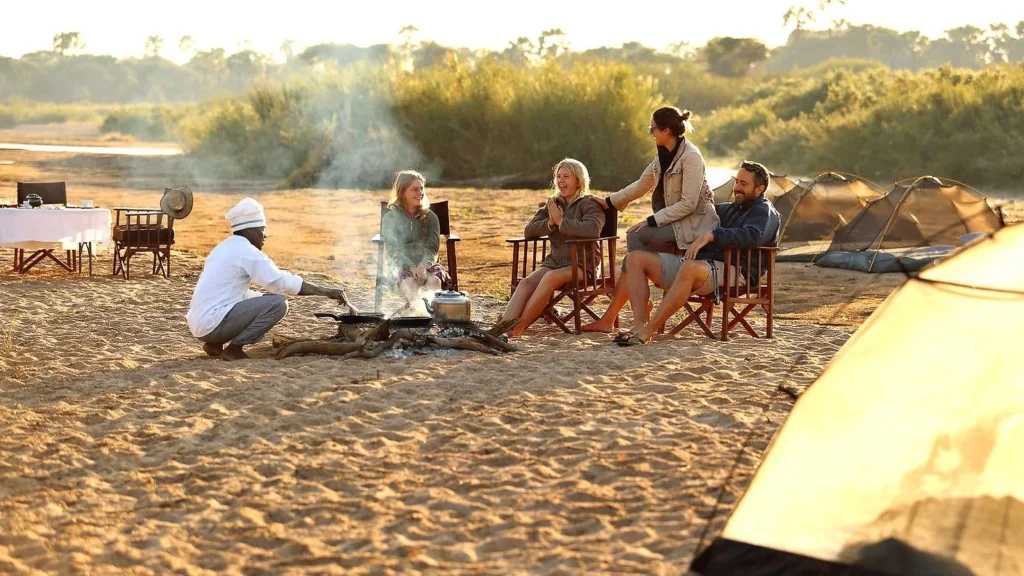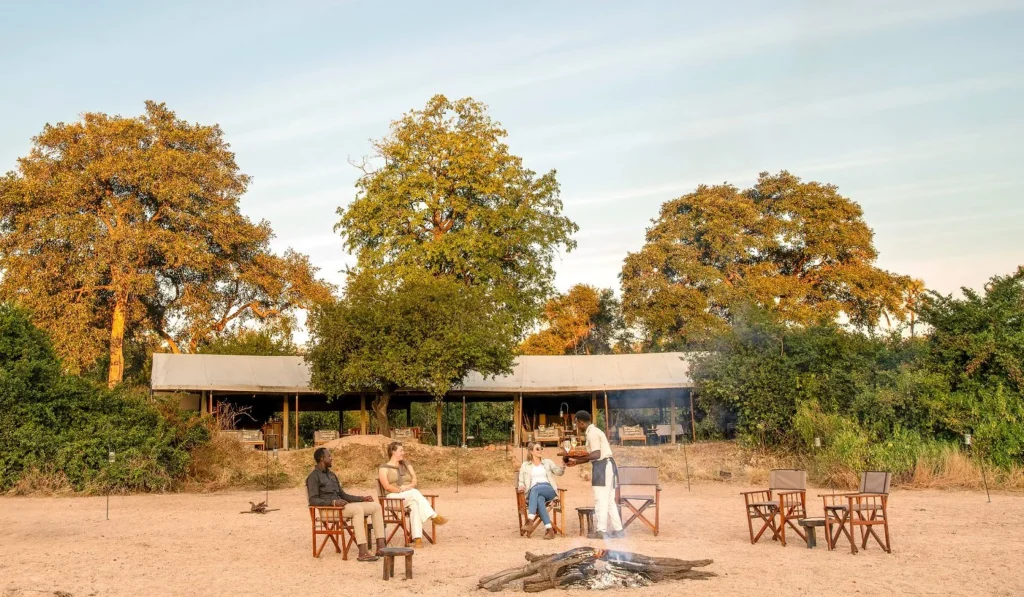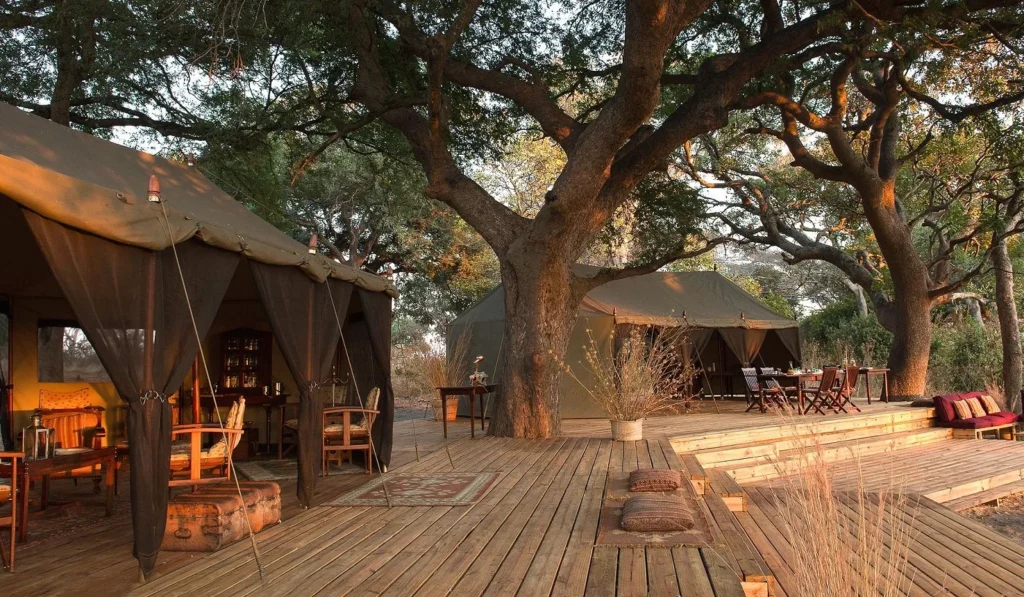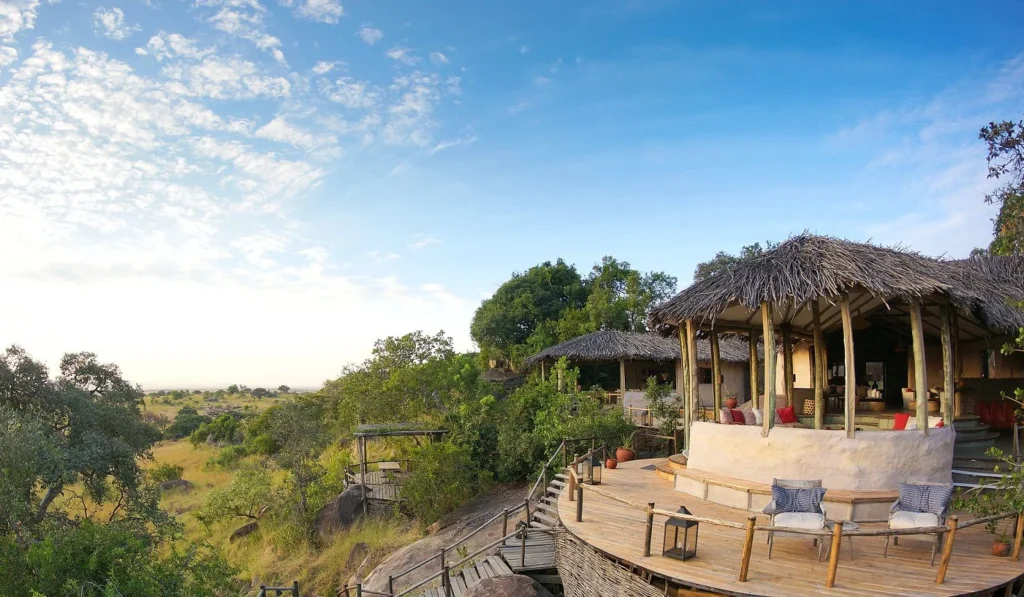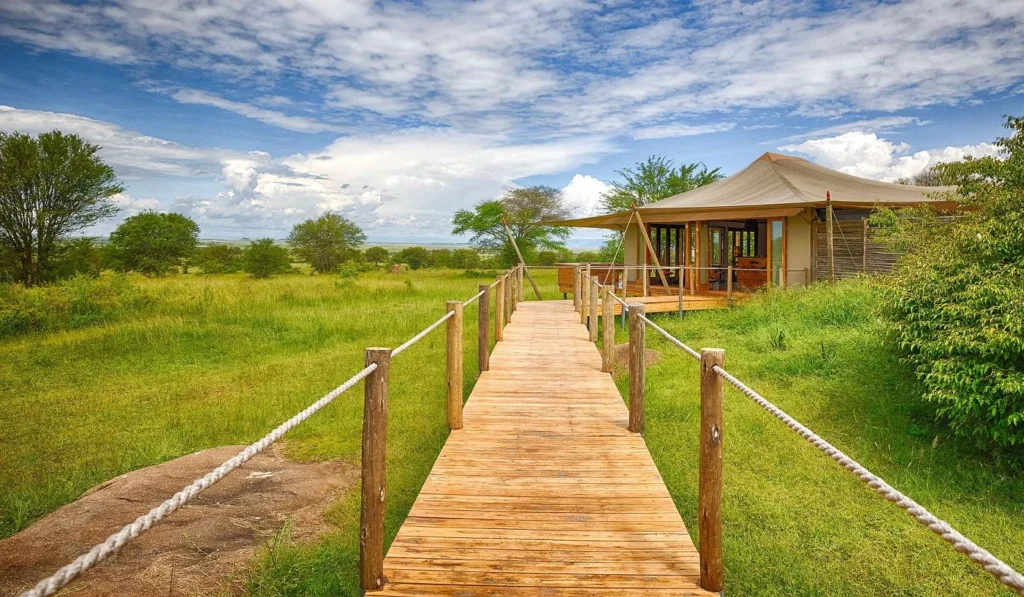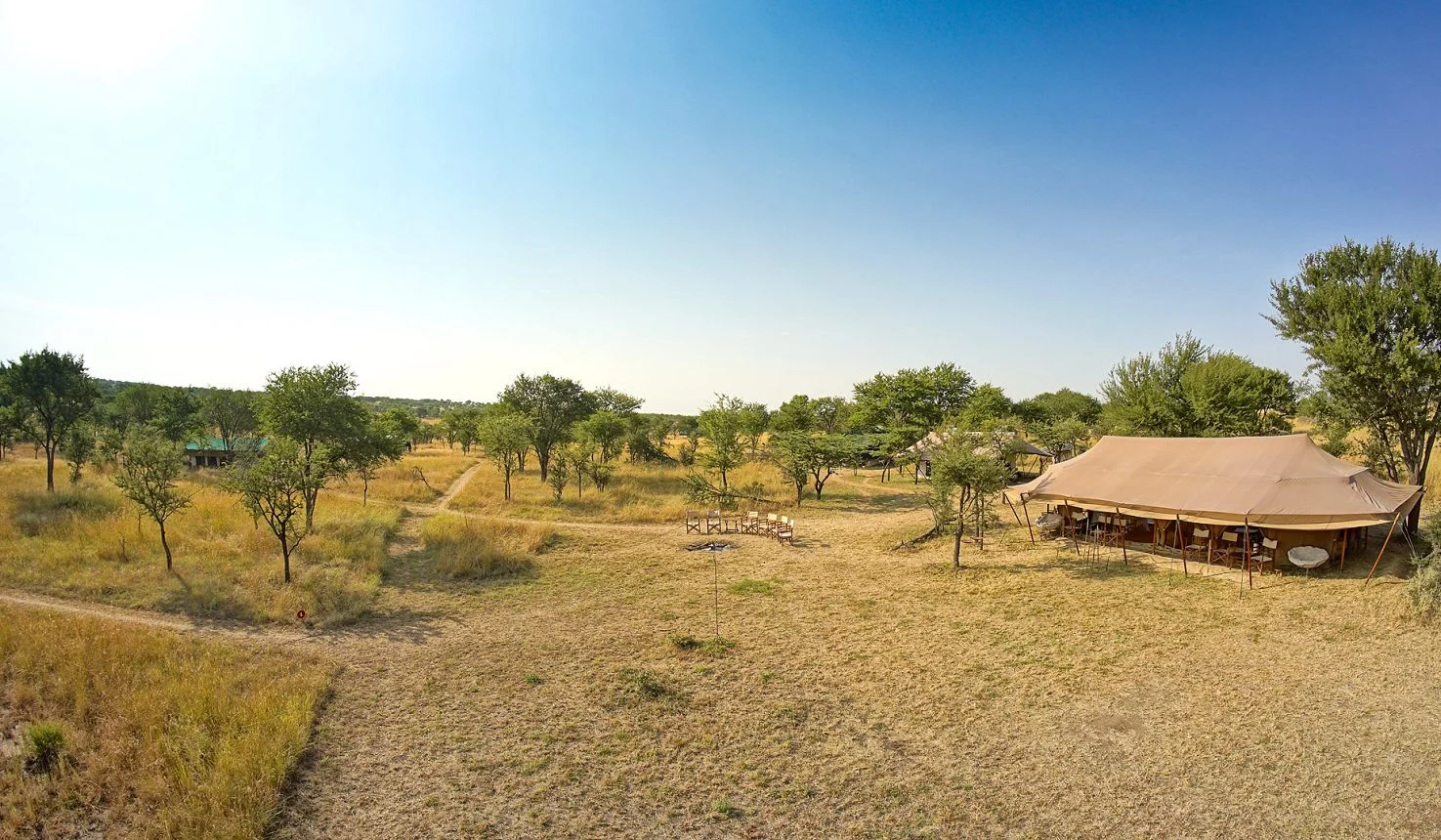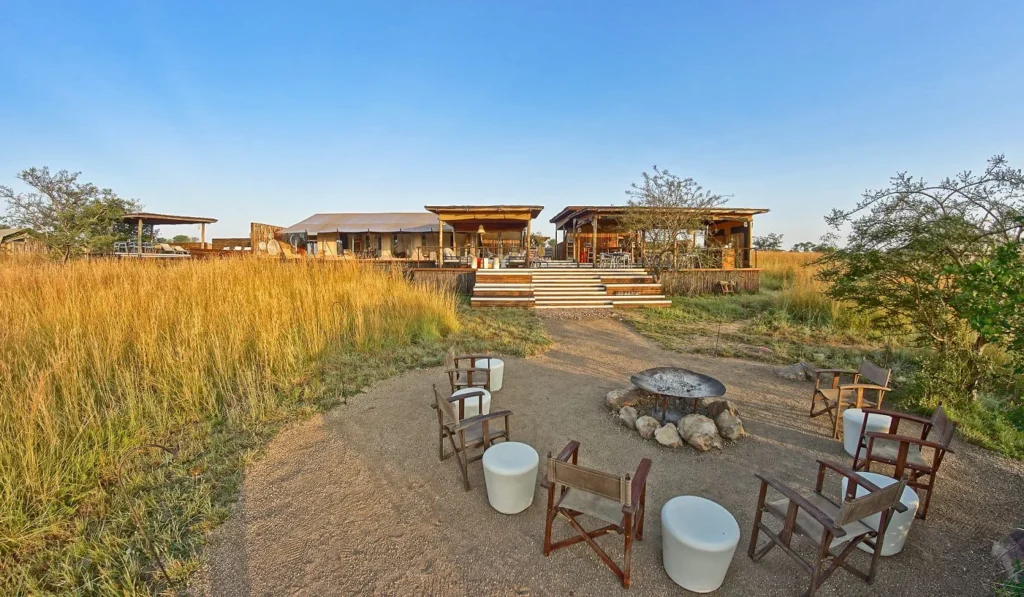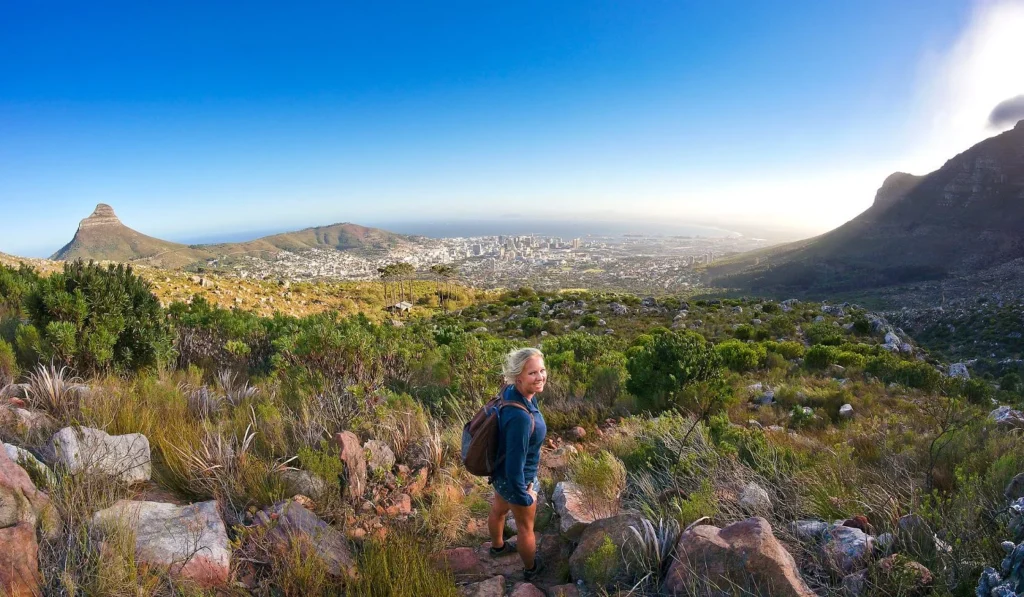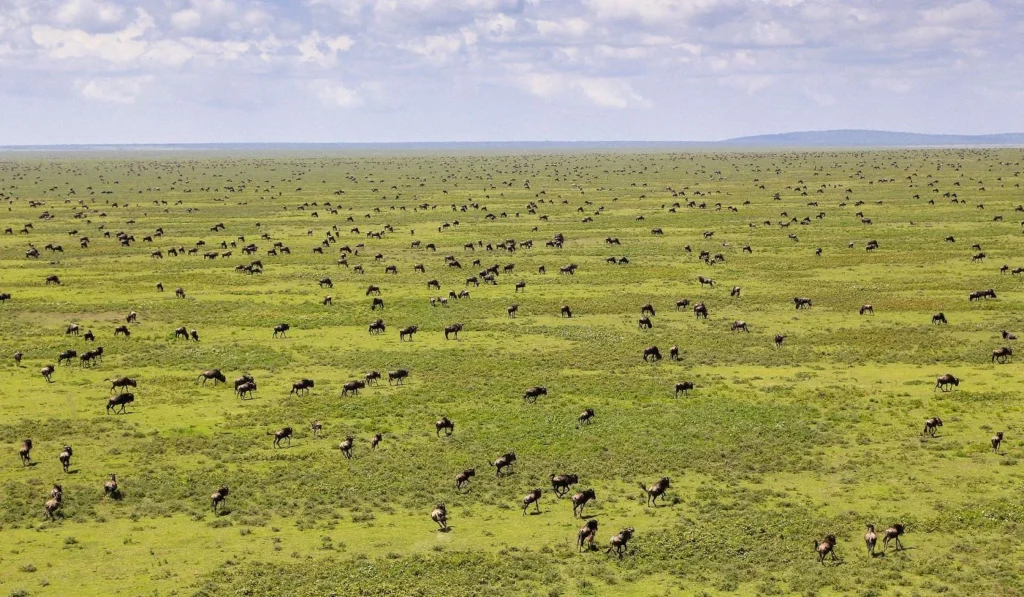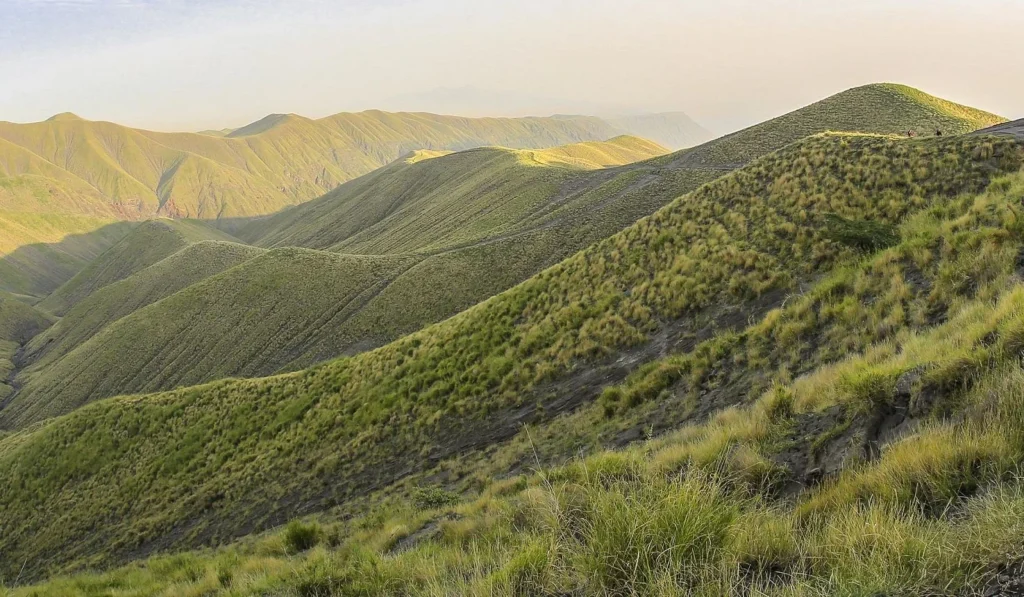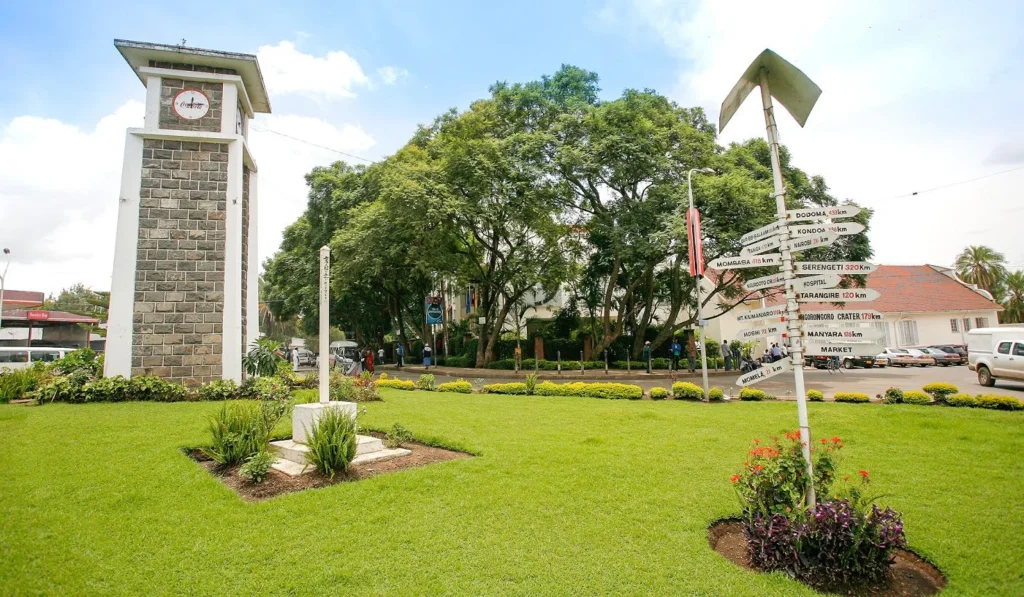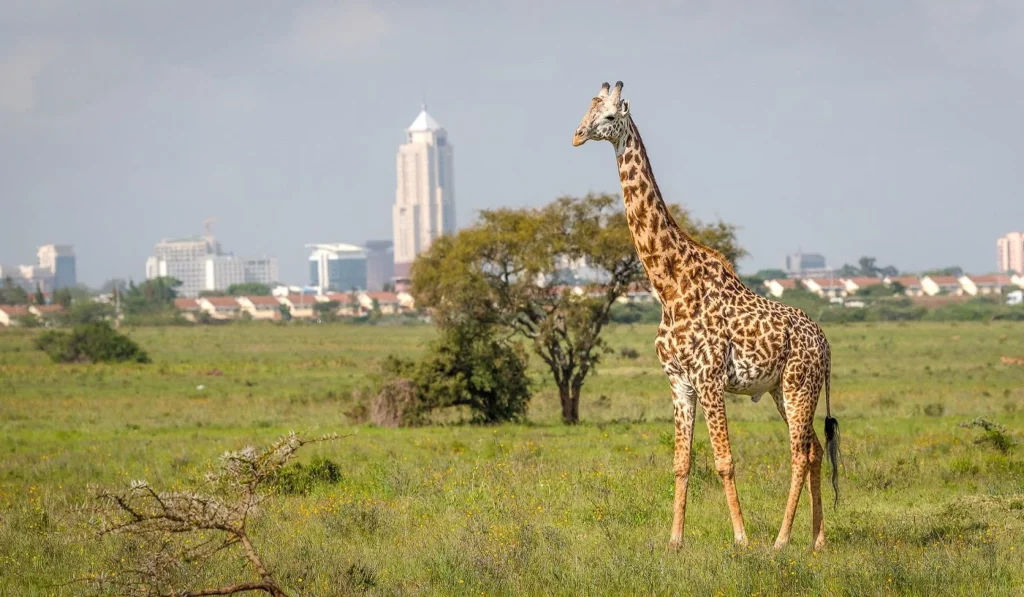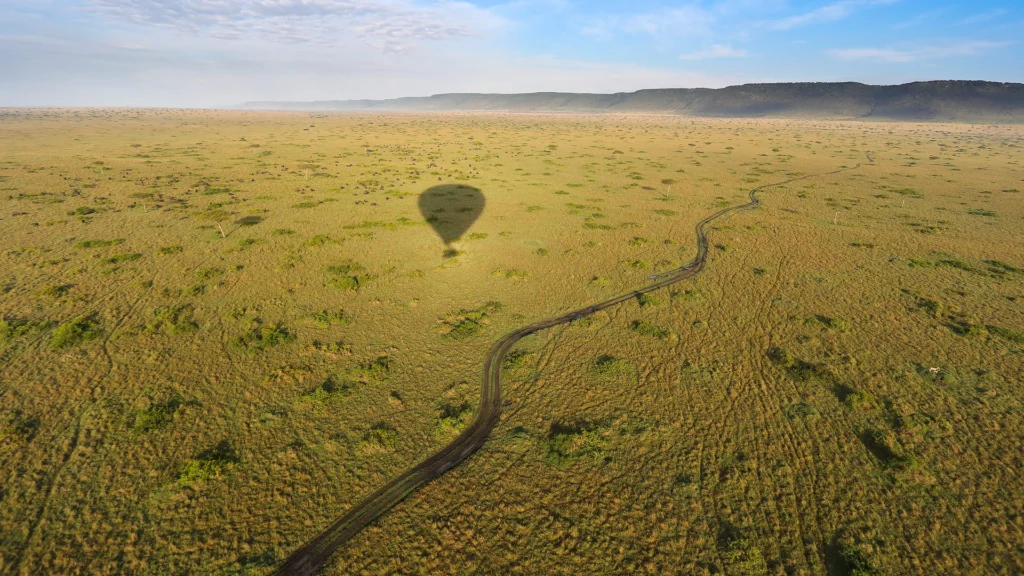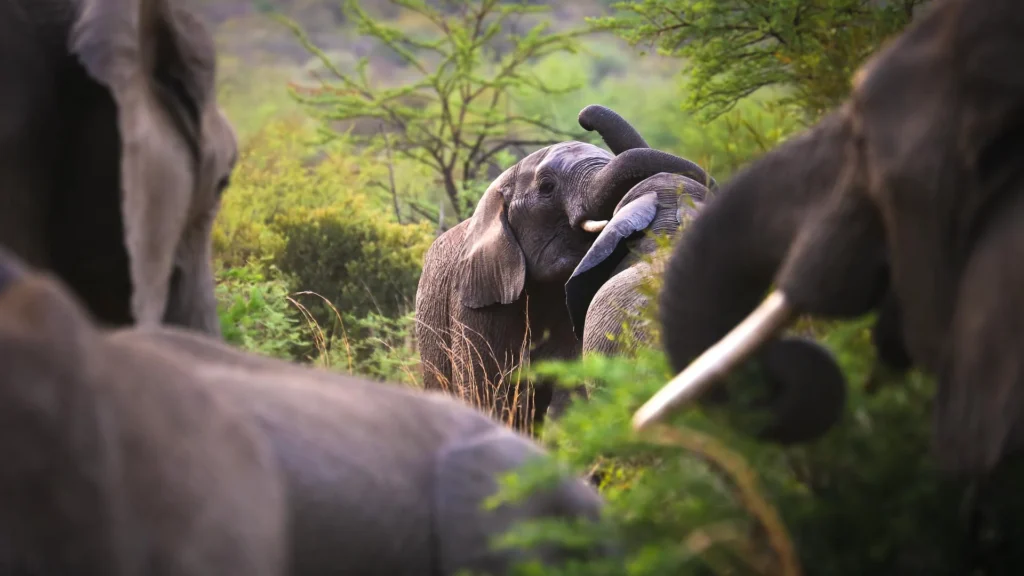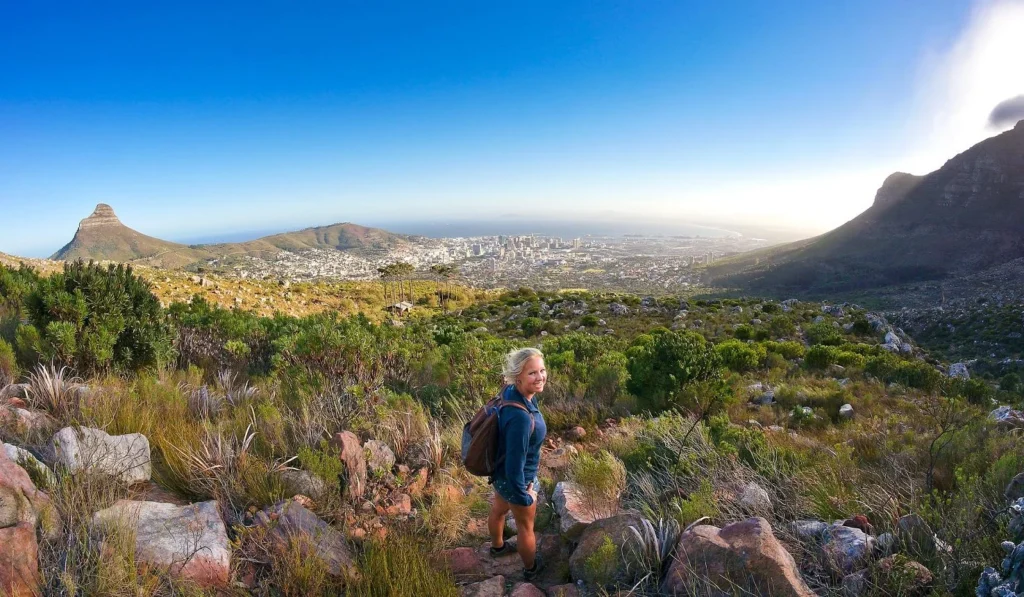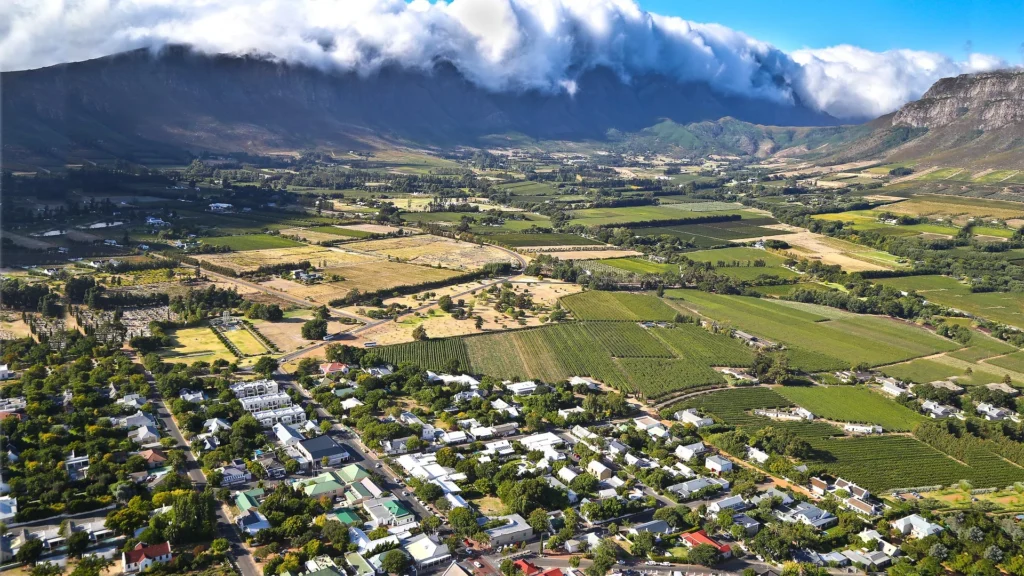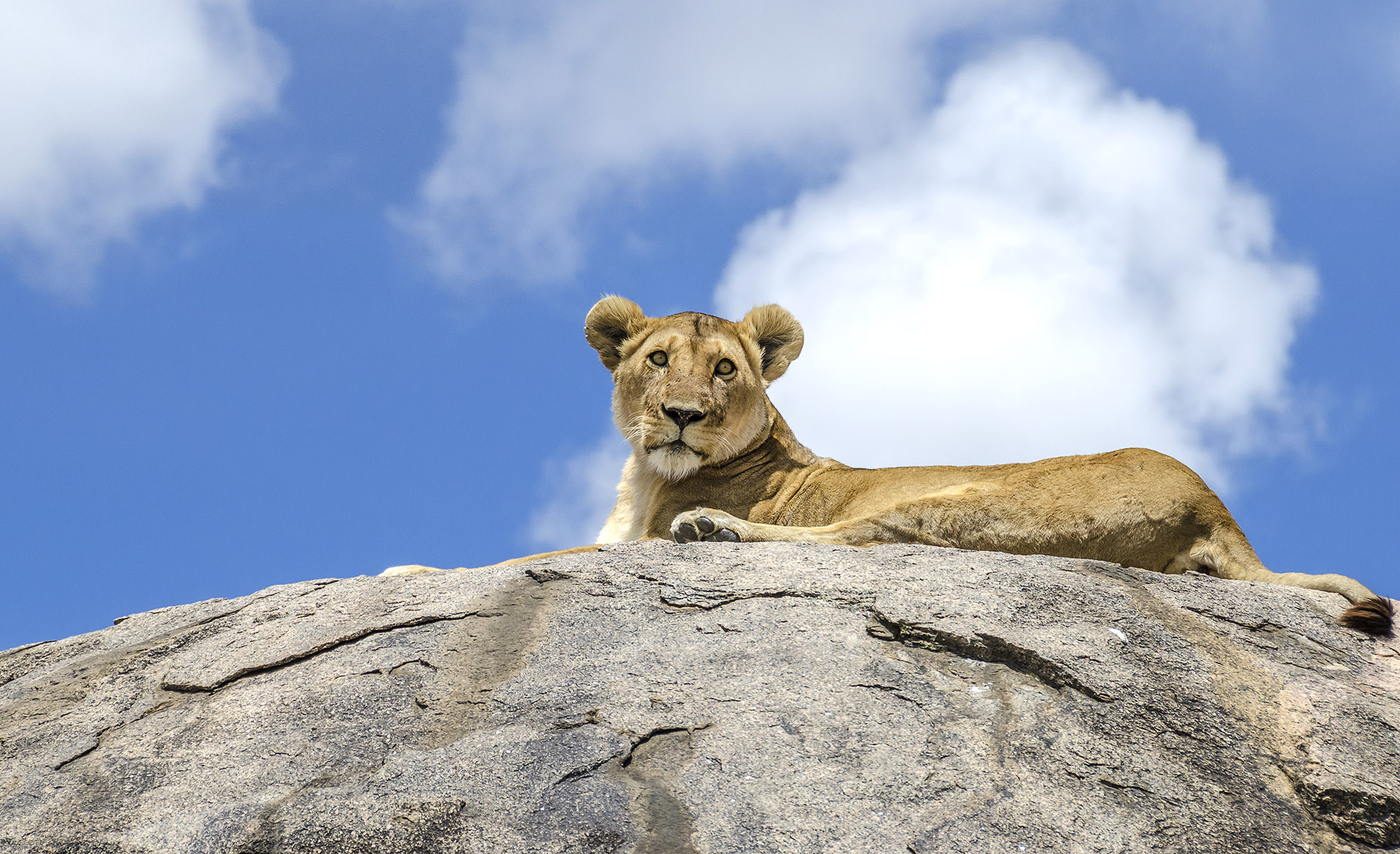
When to go on safari in Tanzania
Tanzania
can be visited during
virtually any month of the year
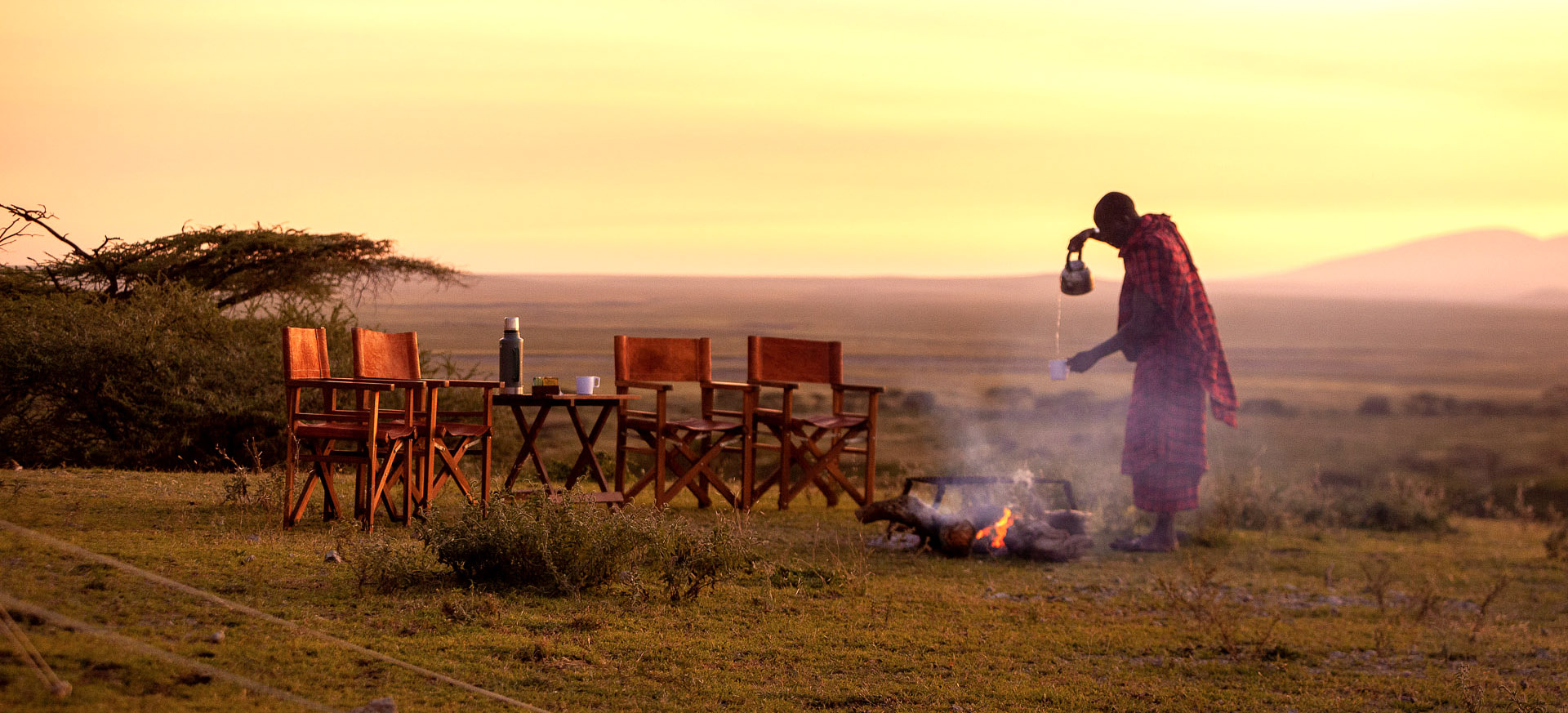
there’s always something great going on
Tanzania is almost unique amongst the safari countries of Africa, in that it is relatively attractive to visit year round.
Although the country experiences a similarly diverse range of seasons, there is always something interesting going on. The single most important factor is the migration calving event in Serengeti, a major event which takes place in the middle of the green season.
The various regions of Tanzania have significantly different seasonalities and careful planning remains extremely important.
The classic time to visit is during the main Jul-Oct dry season, when weather conditions should be good everywhere and wildlife viewing should be spectacular.
The Nov-Dec period is relatively unpredictable, but remains attractive whatever the conditions.
The Dec-Feb green season is when the aforementioned migration calving season takes place in Serengeti. This coincides with fine trekking conditions on Kilimanjaro and good weather down on the coast.
The main Mar-Apr rainy season is generally considered to be a period to stay away, although those who are prepared to endure some potential adversity are rewarded by awesome wildlife and very low visitor numbers, especially in Serengeti. However the conditions down on the coast Mar-Jun are not the greatest.
Seasonality data for safari in Tanzania
helping you to find the perfect combination
of safari locations and lodges
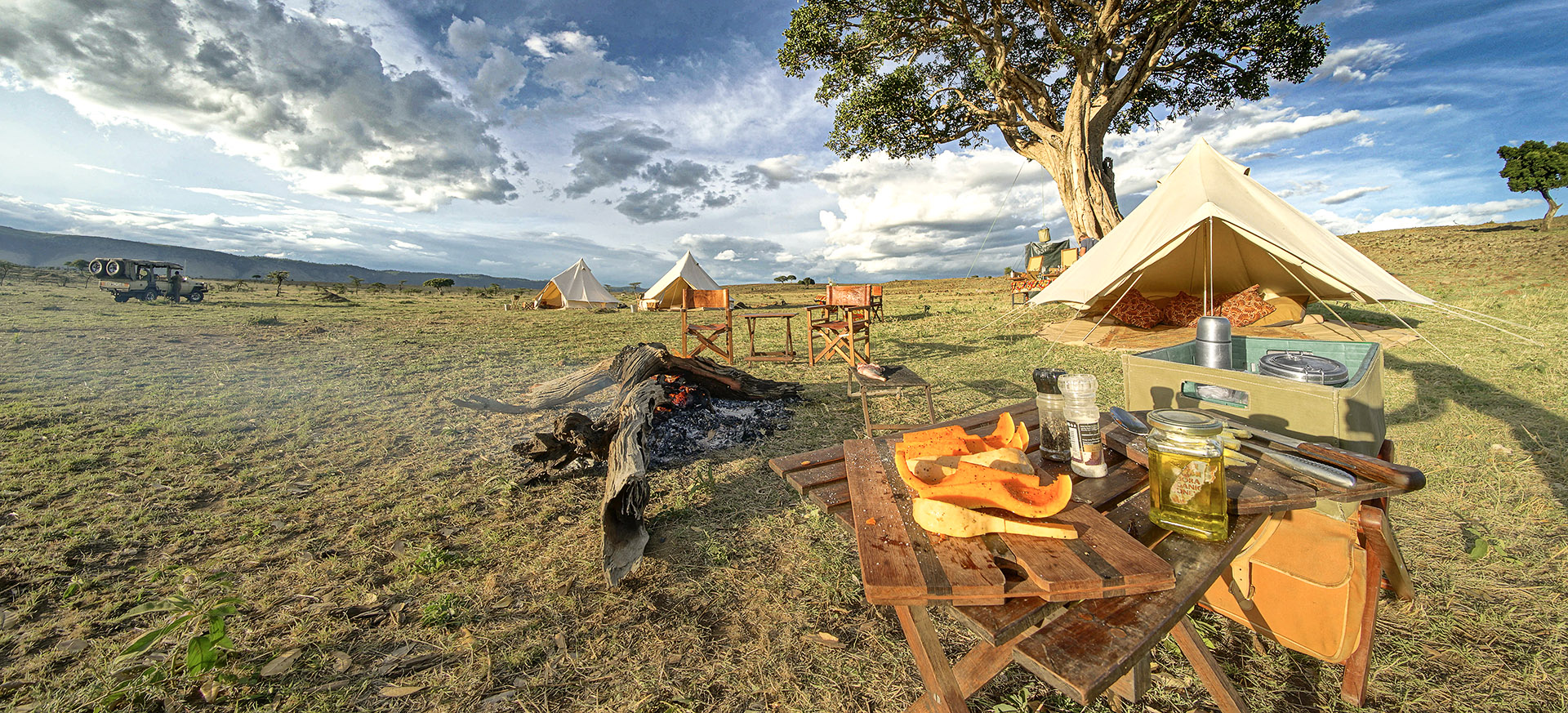
January is generally considered to be a good time to visit Tanzania.
The weather during January in most parts of the country is usually very good, a significant lull between the short rains of November and the long rains of Mar-May.
Daytime temperatures should reach 30-35C/86-95F in most areas.
Down on the coast rain is likely to remain a more or less daily occurrence, it should largely take the form of light showers. Further inland showers should be more occasional.
The overriding conditions should be hot and sunny, with clean and clear air and great light for photography.
On safari, the short rains should have passed, freshening the landscapes and causing many mammal species to start to have their young. If rains have been heavy then many of the animals will have dispersed into the hinterlands, making wildlife viewing generally less intense. So a pleasant and pretty time to be out in the bush, but without the hardcore intensity of the late Aug-Oct dry season.
The one major exception to this is the calving of the wildebeest on the southern plains of Serengeti, an all-action spectacle which draws well-informed travellers from around the world. Almost all trips at this time are shaped around this event.
Conditions on Kilimanjaro are very good to excellent. Although there is a risk of rain and snow, this is generally considered to be one of the better times to be on the mountain.
Visitor traffic in January ranges from very high to medium. The early part of January, up to around 4th or 5th continues to experience the very high traffic of the late December period. Core areas such as the Ngorongoro Crater, Serengeti Central and Zanzibar will be busy and strategic planning will be needed to avoid the crowds. Getting availability in the best lodges can be a real issue and booking at least eight months ahead is advised, especially for groups of four or more guests. The remainder of the month experiences a dramatic drop off in visitor numbers, although getting rooms in the critical Serengeti Southwest area can still be tough.
the remarkable migration calving spectacle in Serengeti
February is generally considered to be a very good time to visit Tanzania.
The weather in most parts of the country is usually very good, a significant lull between the short rains of November and the long rains of Mar-May.
Daytime temperatures should reach 30-35C/86-95F in most areas.
Down on the coast rain is likely to remain a more or less daily occurrence, it should largely take the form of light showers. Further inland showers should be more occasional.
The overriding conditions should be hot and sunny, with clean and clear air and great light for photography.
On safari, the short rains should have passed, freshening the landscapes and causing many mammal species to start to have their young. If rains have been heavy then many of the animals will have dispersed into the hinterlands, making wildlife viewing generally less intense. So a pleasant and pretty time to be out in the bush, but without the hardcore intensity of the late Aug-Oct dry season.
The one major exception to this is the calving of the wildebeest on the southern plains of Serengeti, an all action spectacle which draws well-informed travellers from around the world. Almost all trips at this time are shaped around this event.
Conditions on Kilimanjaro should be superb, this probably the best month of the year to be on the mountain.
Visitor traffic in February is medium. This is a reasonably popular period and traffic in the core areas of Serengeti Southwest and Zanzibar does need to be considered. Getting availability in the best lodges can be a real issue and booking at least six to eight months ahead is advised, especially for groups of four or more guests and especially in that Serengeti Southwest area
the remarkable migration calving spectacle in Serengeti
March is generally considered to be a more challenging time to visit Tanzania.
The weather in March is usually mixed and deteriorating. Some time during the month there should be a major change in the prevailing wind conditions, switching from northeast to southeast. With this change comes the onset of the main rains.
Because there’s usually some rain around in the preceding period and the landscape is therefore not so parched, the breaking of these rains is not usually such a dramatic event as the breaking of the short rains in November. But when they do come, the volume can be considerably greater. We are talking about potentially persistent heavy rains for days and even weeks at a time.
The early part of March is generally considered to be a risk worth taking, but the safari season does tail off significantly into the latter two weeks, meaning that the reserves become pleasantly quiet.
Down on the coast the situation is usually more pronounced, with rain tending to arrive slightly earlier and be rather heavier. Nevertheless there should be a good deal of hot sunny weather in between and daytime temperatures should still continue to reach 25-30C/77-86F in most areas.
Safari in Tanzania in March ranges from good to poor. For the early part of the month the conditions described in the previous month should still be prevailing, but, as the long rains start to move in, so the animals become increasingly scattered, the tracks become more slippery and wildlife viewing becomes more difficult.
The Serengeti migration should still be largely out on the southern plains, just starting to move north and coming into rut, but fewer and fewer people are willing to brave the potentially adverse conditions.
Conditions on Kilimanjaro are variable. With the weather starting to threaten. We tend to wind down our trekking operations, only really outfitting expeditions for hardcore mountaineers and military personnel.
Visitor traffic in March is low and traffic avoidance is not a major issue in trip planning. The one major exception is Southwest Serengeti during the early part of the month, where room availability can continue to be an issue.
quieter, but with increasing chances of heavy rain
April is generally considered to be a very challenging time to visit Tanzania.
The weather during April is usually significantly adverse. This month represents the peak of the main rainy season. Heavy and persistent precipitation can be expected in most parts. Nevertheless daytime temperatures should still continue to reach 25-30C/77-86F in most areas.
Safari in Tanzania in April is generally quite challenging. The heavy rain should now have completely dispersed the animals in almost all areas. Many camps close during this period, with the parks to the south and west becoming virtually cut off by the suspension of air services.
The only areas which remain easily accessible for safari are in the north, namely Lake Manyara, the Ngorongoro Crater and core parts of Serengeti. These are the areas which at other times of year suffer from the highest traffic, but which at this time of year should be reasonably quiet. The wildebeest rut in Southwest Serengeti is a particular highlight, with vast columns of animals moving slowly northwards through the Moru Kopjes area.
Conditions on Mount Kilimanjaro are difficult and dangerous and we only tend to outfit expeditions for hardcore mountaineers and military personnel.
Visitor traffic in April is extremely low and traffic avoidance is not a major issue. Some more experienced safari visitors, who understand that out in the bush rain is a blessing rather than a curse, take the opportunity to visit the Serengeti area in particular and enjoy the luxury of having the place virtually to themselves.
Although conventional wisdom dictates that this is not the best time to travel and we rate it relatively low accordingly, we often find ourselves recommending it very strongly to more experienced safari travellers.
potentially very rainy, but blissfully quiet
May is generally considered to be an improving time to visit Tanzania.
The weather during May is usually mixed. The start of the month can be a continuation of the heavy rains of the preceding month, but in many inland areas these rains can fall away very fast.
Statistics show that the rainfall in Serengeti during May has been very low in most of the last twenty years.
However, down on the coast conditions are much more likely to continue to be adverse, with high winds and persistent rain a real possibility.
Nevertheless there should be a good deal of hot sunny weather in between and daytime temperatures should still continue to reach 25-30C/77-86F in most areas.
Safari in Tanzania in May ranges from poor to very good. As the long rains come to an end in early May, so the animals remain widely dispersed. Furthermore, with the grass and other foliage has really put on some growth, that the animals remain difficult to find.
Reserves to the south and west of the country remain challenging, although Ruaha is starting to get really pleasant through the month.
In the Serengeti region, there are more viable safari options. Low visitor numbers make the core areas of Lake Manyara, Ngorongoro Crater and Serengeti unusually attractive. As the month progresses, so the main wildebeest migration pushes north towards the Grumeti Stream and should be accessible.
Conditions on Mount Kilimanjaro remain difficult and dangerous and we only tend to outfit expeditions for hardcore mountaineers and military personnel.
Visitor traffic in May increases gently from very low to low, with slightly higher numbers starting to flow into the Serengeti region in the last week of the month.
the quiet and pretty early dry season
June is generally considered to be a very good time to visit Tanzania.
The weather in Tanzania during June is usually very good. It’s during this month that the dry season really gets under way. There remains a slight risk of light rain, quite pronounced in some localised areas, but overall we should be looking at decent sunshine hours, with skies possibly becoming a little hazy at times.
Although slightly cooler than usual at night, temperatures should still reach 25-30C/77-86F during the day, with low humidities inland, high humidities along the coast. The weather in Ngorongoro can be very cold, even dropping below freezing at night and often with heavy fog in the mornings. The summit of Kilimanjaro can drop to -35C/-31F and snow showers may be heavy.
Down on the coast the chance of rain showers remains high and there are likely to be strong winds that can rattle the palm trees mornings and evenings during the first part of the month.
Safari in Tanzania in June ranges from good to very good. As the dry season gets underway, areas which have been closed for the past two months at last start to open back up. The animals are likely to remain widely scattered and grass cover continues to be an impediment to wildlife viewing, but the bush should still be quite fresh and pretty. A major highlight is the migration movement in the Serengeti, which in early June should still be crossing the Grumeti Stream.
Conditions on Kilimanjaro are variable, but we do reopen our mountain operations to a wider range of trekkers. Temperatures are at their lowest and heavy snow is often experienced on the summit approaches.
Visitor traffic in June ranges from low to high. This month tends to be populated by well-informed visitors who are getting in early to avoid the peak season traffic. During the first half of the month traffic is therefore less of an issue, but in the latter two weeks core areas such as the Ngorongoro Crater, Serengeti Central and Zanzibar will be starting to get busy and strategic planning will be needed to avoid the crowds.
the early dry season is a very smart time to visit
July is generally considered to be a very good time to visit Tanzania.
The weather in Tanzania during July should have improved to excellent in virtually all areas. The dry season should be well underway, which means there should be lots of sunshine and very little rainfall, although skies can become hazy and nighttime temperatures can be slightly lower than usual. On the coast the tropical showers and onshore winds should have diminished considerably.
Temperatures in most areas should reach 25-30C/77-86F during the day, with low humidities inland, high humidities along the coast. Nights in Ngorongoro can still drop well below 10C/50F. The summit of Kilimanjaro can drop to -30C/-22F and snow may be heavy.
Safari in Tanzania in July ranges from very good to excellent. As the dry season starts to take full effect, so the animals start to move back in towards the permanent sources of water, improving sightings in virtually all the main safari areas.
Towards the middle of the month the wildebeest migration should be reaching the prime Serengeti Mara area, with the increasing prospect of major river crossings.
Conditions on Kilimanjaro are good. We are now well into the main trekking season and conditions are continuing to improve, although temperatures remain relatively low and heavy snow can be experienced on the summit approaches.
Visitor traffic in June ranges from high to very high, climbing through the month, heading towards an August peak. Core areas such as the Ngorongoro Crater, Serengeti Central and Zanzibar will be busy and serious strategic planning will be needed to avoid the crowds. Getting availability in the best lodges can be a real issue and booking at least six months ahead is advised, especially for groups of four or more guests.
a strong need for careful planning and early booking
August is generally considered to be a very good time to visit Tanzania, albeit a rather busy time.
The Tanzania weather in August should be excellent in virtually all areas. The dry season should be well underway, which means there should be lots of sunshine and very little rainfall, although skies can become hazy and temperatures can be slightly lower than usual. On the coast any tropical showers and onshore winds should be relatively light.
Temperatures should reach 25-30C/77-86F during the day, with low humidities inland, high humidities along the coast. Nights in Ngorongoro can still be cold, but not as low as preceding months. The summit of Kilimanjaro should also not be quite so cold and snow showers should be less frequent.
Safari in Tanzania in August should be excellent. Wildlife viewing in virtually all areas should be reaching its best as the long grasses die back and animals settle in around the permanent water sources.
It’s difficult to list all the safari highlights at this time of year, but in the Serengeti region alone one should look out for huge herds of elephant in Tarangire, the highest density of lions and cheetahs in Africa in Central Serengeti and migration river crossings in the Serengeti Mara area.
Conditions on Kilimanjaro should be very good. We are now well into the main trekking season and conditions are continuing to improve, with low temperatures starting to become less of an issue.
Visitor traffic in August is very high, mainly due to the school holidays and summer shut-downs in Europe. Core areas such as the Ngorongoro Crater, Serengeti Central and Zanzibar will be busy and strategic planning is essential to avoid the worst of the crowds. Getting availability in the best lodges can be a real issue and booking at least eight months ahead is advised, especially for groups of four or more guests.
Our general recommendation is to avoid August if you can, but not to worry if you can’t, we will come up with a great solution.
a strong need for very careful planning and early booking
September is generally considered to be a very good time to visit Tanzania.
The weather in Tanzania during September should be excellent in virtually all areas. The dry season should be in full flow, meaning there should be lots of sunshine, clear skies and very little rainfall. On the coast the tropical showers and onshore winds should be relatively light.
Temperatures should reach 25-30C/77-86F during the day, with low humidities inland, high humidities along the coast. Nights at higher elevations like Ngorongoro should no longer be too cold. The summit of Kilimanjaro should also not be so cold and snow is unlikely.
Safari in Tanzania in September should be excellent. Wildlife viewing in virtually all areas should be reaching its best as the long grasses should have died back and animals become settled around the permanent water sources.
It’s difficult to list all the safari highlights at this time of year, but in the Serengeti region alone one should look out for huge herds of elephant in Tarangire, the highest density of lions and cheetahs in Africa in Central Serengeti and migration river crossings in the Serengeti Mara area.
Conditions on Kilimanjaro should be very good.
Visitor traffic in September ranges from very high to high. The peak traffic of August spills over significantly into the early part of September, although rarely reaches the madness of the first two weeks of the previous month. For those first two weeks in September core areas such as the Ngorongoro Crater, Serengeti Central and Zanzibar will be busy and strategic planning will be needed to avoid the crowds. Getting availability in the best lodges can be a real issue and booking at least eight months ahead is advised, especially for groups of four or more guests.
Towards the end of the month numbers should start to fall away significantly and traffic becomes far less of an issue.
best to travel later in the month
October is generally considered to be a very good time to visit Tanzania.
The weather in Tanzania during October should be excellent in virtually all areas. The dry season should be reaching its peak, which means there should be lots of sunshine, clear skies and very little rainfall. On the coast the tropical showers and onshore winds should be relatively light.
Temperatures should reach 30-35C/86-95F during the day, with low humidities inland, high humidities along the coast. The summit of Kilimanjaro should not be so cold and snow should be unlikely.
Safari in Tanzania in October should be excellent. We are now reaching the peak of the dry season. The animals have been concentrated around the permanent water sources for some months and life has really started to get tough for herbivores as the grazing depletes and predators exact a heavy toll.
It’s difficult to list all the safari highlights at this time of year, but in the north alone one should look out for huge herds of elephant in Tarangire, the highest density of lions and cheetahs in Africa in Central Serengeti and migration river crossings in the Serengeti Mara area.
If the rains break early then October could see some wildlife dispersal, as described in November, but generally speaking this isn’t the case.
Conditions on Kilimanjaro are excellent to moderate. As the month progresses, so the chances of getting caught by the short rains or snows at higher altitudes increases. The first couple of weeks should be a pretty safe bet, the third week more risky. We tend to start winding down our main trek operations just before the end of the month.
Visitor traffic in October is reasonably low. Despite being such a good month to be in Tanzania, relatively few people seem able to take advantage. If you are not tied to school holidays or work shut-downs, then we recommend that you do your best to catch the middle part of the month. This is a great time to be out on safari and without the oppressive heat experienced in countries further south.
peak dry season with epic wildlife
November is generally considered to be an interesting time to visit Tanzania.
The weather in Tanzania during November can be quite unpredictable. At some time during the month the prevailing winds should swing dramatically from the southeast to the northeast, a change that should induce the short rains.
Down on the coast this change tends to be more pronounced, with a significant increase in precipitation and a good deal of cloud cover.
Further inland the change is less predictable, with locations such as Serengeti, Selous and Katavi probably also experiencing an end to the dry season. This could take the form of a couple of light showers during the month, or weeks of more regular rain and cloud cover. Daytime temperatures in most areas should still reach 30-35C/86-95F in most areas. Uniquely, the gorgeous Ruaha reserve tends to remain dry.
Safari in Tanzania in November should be excellent to good. The reason for the wide range in rating is the unpredictability of the short rains.
If there is sufficient rainfall to fill the seasonal waterholes, then the wildlife will disperse into the vast hinterlands and be much less accessible.
On the other hand, if the rains fail to properly
materialise (as they do some years) then dry season conditions will continue and even exaggerate, leading to epic if potentially tragic wildlife sightings.
In the Serengeti, the main migration will start to move as soon as the first lighting strikes in the Ngorongoro Highlands to the south, which means that huge columns can be seen moving south through the reserve, although this is not generally considered to be a spectacular or reliable time of year for migration viewing due to the difficult terrain in this particular area.
Conditions on Kilimanjaro are likely to be difficult and dangerous. The weather is quite unpredictable through this month and unpredictability is not something we want on the mountain. We only tend to outfit expeditions for hardcore mountaineers and military personnel at this time.
Visitor traffic in November is very low, both because of the potentially adverse weather and simply because so few people seem to travel at this time of year. This makes it a great month to visit better known locations, such as the Ngorongoro Crater and Serengeti Central.
a fabulous month for those willing to gamble
December is generally considered to be a good time to visit Tanzania.
The weather in Tanzania during December can be quite unpredictable, although it is usually slightly better than November. Usually by the middle of the month the short rains have largely blown through and conditions should be returning.
Daytime temperatures should reach 30-35C/86-95F in most areas.
We have noted that El Nino years can deliver particularly heavy rains, causing chaos over the main holiday season. The last occasion was 2023-24 and they tend to happen on average every 3 years.
Safari in Tanzania in December should be very good to good. The usual course of events seems to be that the short rains in November and early December most often fail to deliver sufficient volumes to fill the seasonal pans out in the hinterland for any prolonged period. So, although the period can see animals moving away from permanent water sources, more often than not they are forced to return, or at least not stray too far. This means that wildlife viewing in December is generally pretty good in most areas, if not to the same remarkable levels of the dry season.
A major highlight is the arrival of the migration onto the southern plains of Serengeti. The timing of this event varies considerably year on year, but late December is probably the median. It all depends upon localised patterns of showers. If the rains are early, then the calving season may get underway before the end of the month.
Conditions on Kilimanjaro range from poor to very good. December is a split month. The first half usually offers up adverse conditions similar to those in November, whilst the second half tends to be much more like January. When this breakpoint will actually fall each year is quite tricky to predict. We tend to fully reopen our operations during the second week, warning trekkers that the first outing of the season can be a little tougher than usual. By the time the main bulk of visitors arrive for the Dec-Jan holiday period, conditions should hopefully be more favourable.
Visitor traffic in December ranges from very low to very high, it’s a very black and white month in this respect. Up to around the 18th, the place is virtually empty. Then, over the space of a few days, the holiday season traffic arrives and numbers jump to a year round peak.
If you can possibly shift your vacation forward by a few days then you will be rewarded by a much quieter and more peaceful visit. If you need to visit over the Christmas and New Year period then core areas such as the Ngorongoro Crater, Serengeti Central, Serengeti Southwest and Zanzibar will be busy and strategic planning will be needed to avoid the crowds.
Getting availability in the best lodges can be a real issue and booking at least eight months ahead is advised, especially for groups of four or more guests.
predictably busy during the second half of the month
let us know your thoughts about Tanzania
and we will help you create the perfect trip
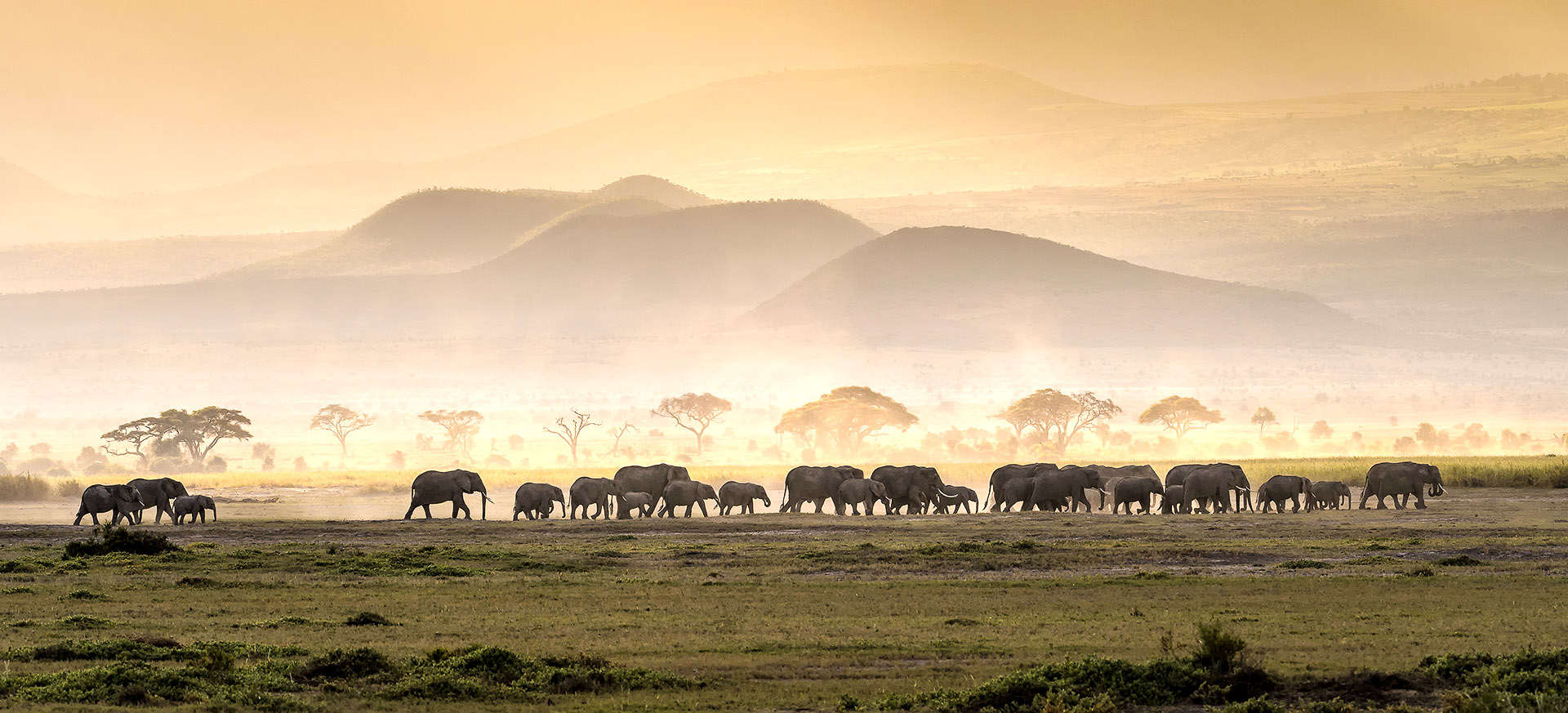
Extraordinary tailor-made adventures,
from earthy and edgy to easy and extravagant
From around USD 2500 per person, you set the ceiling
Sample Trips
Here are some of our popular trip shapes
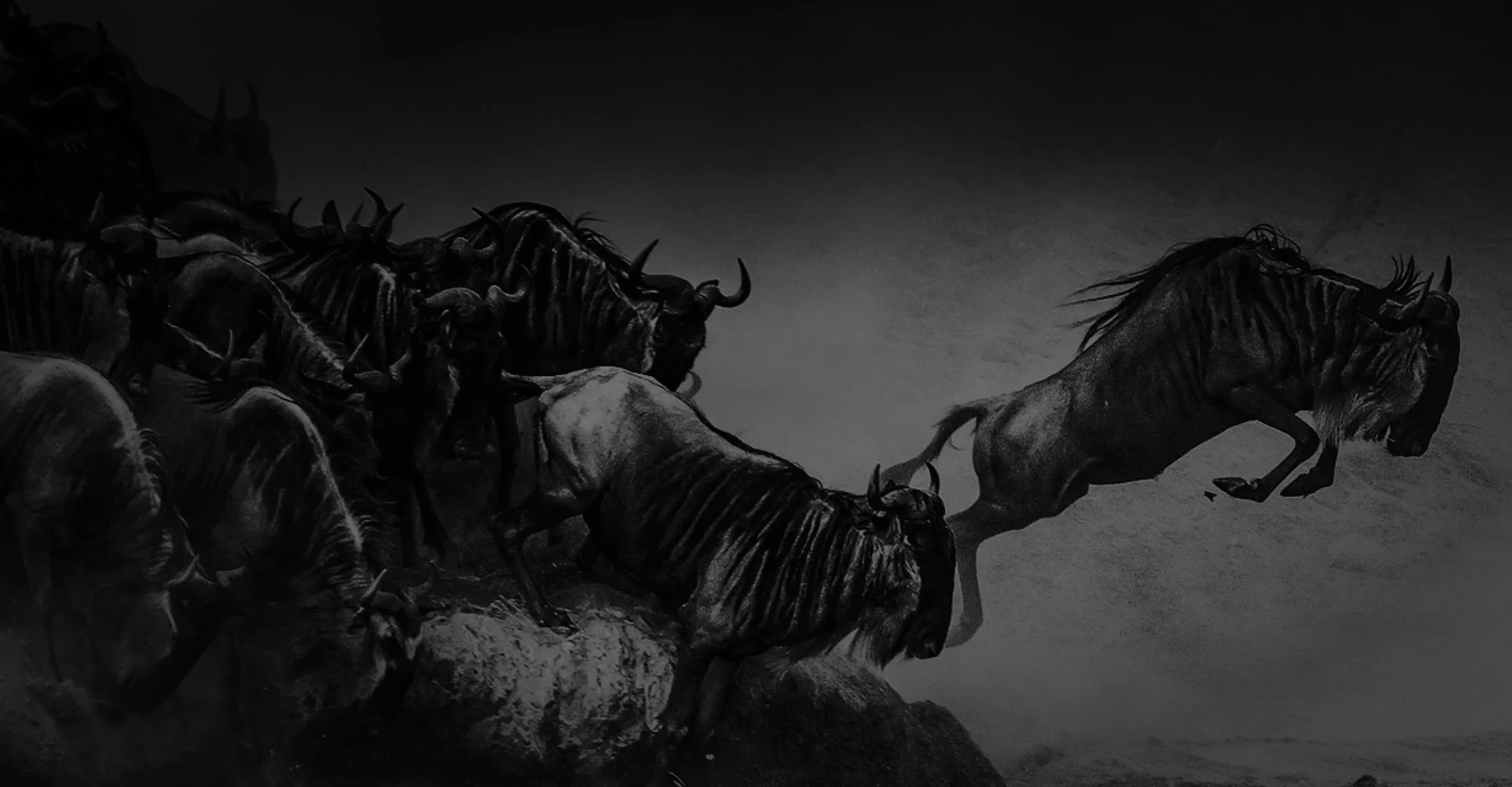
Get started on your trip
It’s never too soon to get in touch, we are here to help with every stage of your planning.
Best Lodges
We regularly inspect and photograph all of the the best lodges, to ensure that we always recommend the most suitable options
Key Locations
Take a look around related locations. Click ‘View more’ to explore locations further afield.
